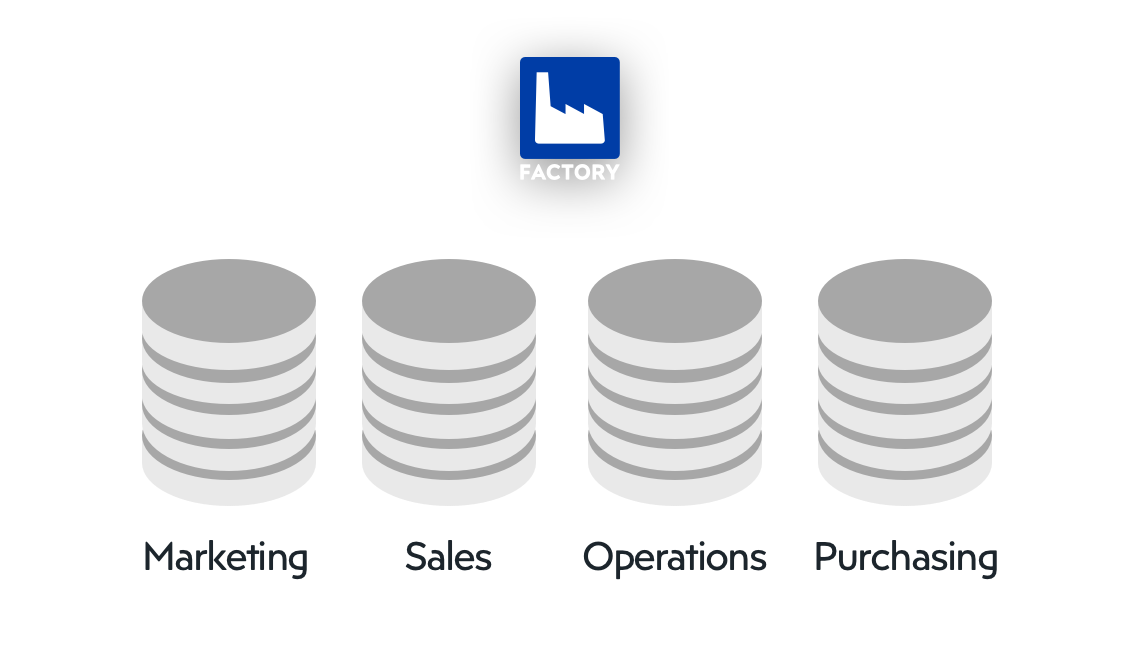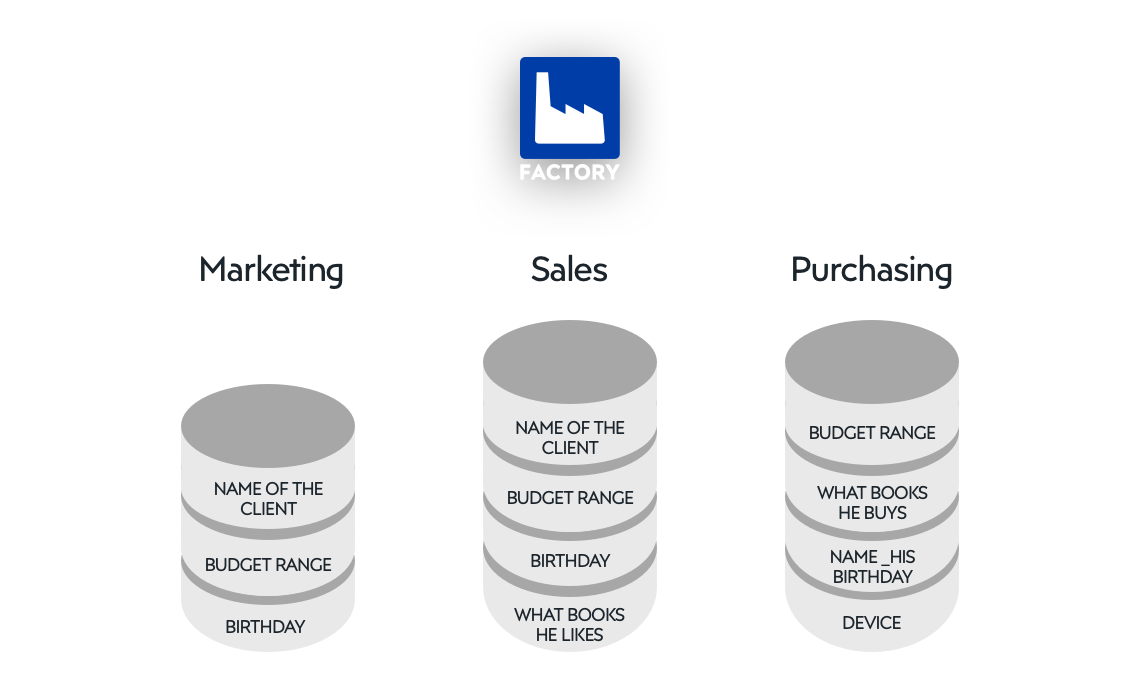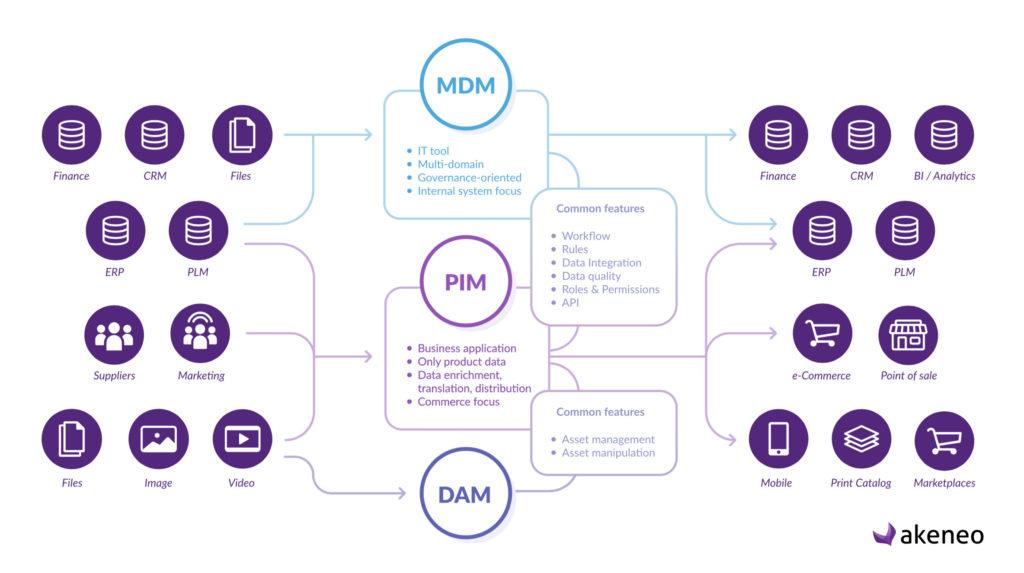What is a data silo and why is it bad for your organization?
As we venture into this topic, let’s first define the data silos. It’s possible to identify the data silo as a repository of fixed data that remains under the control of one of the departments and is usually isolated from the rest of the organization.
We can actually compare it to the grain in a farm silo that is closed off from any of the outside elements.
Data silo as a problem in interdepartmental communication
But now, why is it bad for your organization? It makes communication between departments a lot more complicated, and sometimes even the data one department has can be quite outdated.
If you want your business to be more efficient, you probably want to eliminate the data silos. How can you do it? Well, you could do it with our help! We’re a Pimcore development agency with several Pimcore projects in our portfolio. Pimcore is perfect for solving the data silo issue and many more!
Pimcore is the only open-source digital experience platform with inbuilt data management and experience management capabilities. It enables you to manage all your data from one centralized place and makes the management a lot simpler for companies with large quantities of data.
But let’s hold on to the data silo topic a bit longer.
Let’s take a look at what we have prepared for you
What is a data silo?
As we said, it’s a repository of fixed data that’s under control of one of the departments. Other departments usually don’t have access to that data, and it makes it harder for departments to interact with each other.

Data silos are a common occurrence in large organizations because each department has different goals, priorities, and responsibilities. Data silos can show up also in situations when departments are competing with each other instead of collaborating.
They are usually seen as a hindrance to effective business operations, and businesses are trying to break them down. They consider the data silos as a barrier to collaboration, accessibility, and efficiency.
The data silos are a result of several factors:
- Cultural – competition, and animosity between departments leads to employees keeping the data from each other, rather than collaborating
- Structural – Mainly in large companies, data silos come out as a result of a hierarchy, separated by many layers of management and staff.
- Technological – Very often it happens that one department doesn’t have access to an application used by other departments. Hence they are deprived of data used by a particular department.
In recent times, data silos have been severely criticized because they inhibit productivity, and they harm data integrity. When two or more silos exist for the same data, their contents are highly likely to differ. That creates confusion as to which data silo is more up-to-date.
Even though it’s challenging to integrate data from systems that were not intended to work together in the first place, there are a few ways to unify your data and ensure data consistency.
Why are data silos bad for your business?
In short, data silos waste cause waste of resources and they inhibit productivity. Two dire situations can arise from data silos:
- Teams store the same data
- Teams store the complementary, but separate, data

Each situation causes multiple problems.
To start off, storage costs money. The question arises – why pay extra to store the same data in multiple places?
Enabling different teams access to the same data is much more efficient. If you’re trying to budget somewhere, this should be one of the first things you do.
To continue, in some situations, the contents of multiple data silos will likely differ. How to determine which data silo is more up to date? One of the risks is also overwriting the current data with outdated data.
In the moment of an established culture of separating data, it’s challenging to change the mindset of employees. Also, undoing some of the siloes could pose a difficulty due to the way that systems are arranged with various permissions.
For example, permissions are often set up by a group. Once the data is stored for a specific group, it becomes difficult to change all the needed permits.
Also, the data could be stored in different systems. Data for the Security Operations group could be stored in an Oracle database, while the Sales group stores their information in Salesforce. In that case, the task of undoing data silos becomes even harder.
To simplify the process, usually, companies move their data from their multiple systems into a data warehouse. A data warehouse stands for a repository for all data collected by an enterprise’s operational systems. They are optimized for access and help managers get a complete view of their company’s data.
Pimcore functions in the same way. All the data is placed in one central place. Employees have access to that data, be they in a developer team, marketing team, or a part of management.
It’s possible to govern the data in any wanted way. Pimcore’s products PIM, DAM, and MDM are mainly responsible for that:

Picture courtesy by Akeneo
- Product Information Management (PIM) makes it easy to connect to any external system and enables communication from one place across all channels.
- Digital Asset Management (DAM) serves as a unique component for storing and distribution all kinds of digital assets in one place.
- Master Data Management (MDM) serves as a central place for managing large quantities of data, reducing data retrieval times and essentially, eliminating data silos.
By now, we can see that the data silos are bad for your organization, and luckily, we gave a hint of the solution!
How much do data silos cost?
It’s hard to precisely give any real numbers without delving into a lot of hypotheses. But we can think about it in terms of how much you value your employee’s time and your organization’s time.
How much are you going to lose per hour if one of your employees can’t work due to the problems with the network? Or how much are you going to lose due to the fact that your projects and goals are being pushed back because of this?
If you answer these questions, you will conclude that the cost of the data silos is needless.
3 steps to break down the data silos
We’re going to name some steps you can take to undo the data silos and manage your data carefree. So let’s begin!
- Choose a new platform for your data management.
This is undoubtedly the most essential step. What would that mean for you? No more Excel spreadsheets and random software. Placing all the data into one platform makes it easy to share the data with other departments.
That means no more digging through your private records – everything is accessible by everyone.
Pimcore arises as an optimal solution for the data silos issue. As said previously, you can manage all the needed data from one place and quickly communicate to any external system. In many cases, Pimcore has proven as a powerful platform, serving the world’s most significant companies.
- Create a cooperative company culture
For company executives, it’s vital to create an organization that will embrace the company culture. Many companies have some “Diversity & Inclusion” team that works on creating a culture that will bring all employees together.
They plan company wide-events and generally, welcome all the traits that make each employee special. That way, they create a company that’s accepting of each other and much more collaborative, removing a barrier between the teams and making it much easier to share data.
- Take the time to sort through outdated data
It may seem intimidating to go through years and years of obsolete data. But, to create a usable data management system, it’s inevitable to ensure that all data is accurate and up-to-date.
To achieve that, have your company slowly work through all the data stored and eradicate any unnecessary data. You can look at this as a team-building activity – a win-win situation!
What can we do for you?
To conclude, there is much you need to do in order to improve your data management and eradicate data silos. Working continuously, while knowing there are data silos that are slowing down the growth of your company, maybe dangerous.
As we said earlier, the first step to breaking down the silos is to choose a new platform for your data management. Luckily, we can help you.
If you’re facing troubles concerning data silos, Pimcore is an ideal solution for you. We create high-quality Pimcore solutions for you as you can see in our previous work. Many companies have already seen the opportunity of transforming their business and it’s working great for them! No more data silos, no more lost and outdated data, and no more communication errors.
If you’re ready to level up your business and get rid of all nuisances, it’s time to go omnichannel!
There are many benefits in transforming your business – for example, your customer experience can improve drastically due to the customers having the same experience across all channels.
If you’re dealing with eCommerce, Pimcore can help you organize your large quantities of data and execute marketing activities within the platform. It’s perfect for big companies, dealing with a huge amount of data.
Even if you still don’t have a huge amount of data, plan in advance! Your company is going to grow and it will save you a lot of money if you operate on Pimcore from the start.
Go for it – we’re here for you.